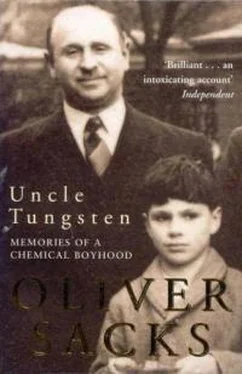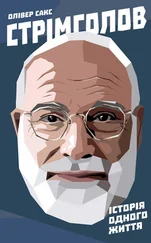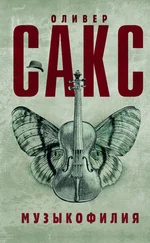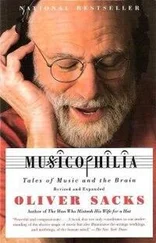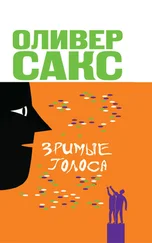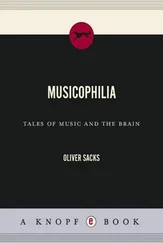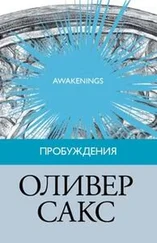Though with my return to London and my ‘apprenticeship’ (as I sometimes imagined it) with my uncles, many of the fears of Braefield had vanished like a bad dream, they had left a residue of fear and superstition, a sense that some special awfulness might be reserved for me, and that this might descend at any moment.
The special dangers of chemistry were sought out, to some degree, I suspect, as a means of playing with such fears, persuading myself that by care and vigilance, prudence, forethought, one could learn to control, or find a way through, this hazardous world. And here, indeed, through care (and luck), I never hurt myself too much, and could maintain a sense of mastery and control. But with regard to life and health generally, no such protection could be counted on. Different forms of anxiety, of fearfulness, now struck me: I became afraid of horses (still used by the milkman to drive his float), afraid they might bite me with their large teeth; afraid of crossing the road, especially after our dog, Greta, was killed by a motorbike; afraid of other children, who (if nothing else) would laugh at me; afraid of stepping on the cracks between paving stones; and afraid, above all, of disease, of death.
My parents’ medical books nourished these fears, fed an incipient disposition to hypochondria. Around the age of twelve I developed a mysterious, though hardly life-threatening, skin condition, which produced an exudation of serum behind my elbows and knees, stained my clothing, and made me avoid ever being seen undressed. Was it my fate, I wondered fearfully, to get one of these skin disorders or monstrous tumors I had read about – or was progeria the unspeakable fate that was reserved for me?
I was fond of the Morrison table, a huge table of iron that was lodged in the breakfast room, and which was strong enough, supposedly, to bear the whole weight of the house if we were bombed. There had been many accounts of such tables saving the lives of people who would otherwise have been crushed or suffocated beneath the debris of their own houses. The whole family would take cover under the table during air raids, and the notion of this protection, this shelter, took on an almost human character for me. The table would protect us, look out for us, care for us.
It was very cozy, I felt, almost a little cottage within the house, and when I came back from St. Lawrence College, at the age of ten, I would sometimes crawl under it and sit or lie there, quietly, even when there was not an air raid.
My parents recognized that I was in a fragile state at this time, and they offered no comments when I retreated and crawled under the table. But one evening, when I emerged from beneath it, they were horrified to see a bald circle on my scalp – ringworm was their instant, medical diagnosis. My mother scrutinized me more closely and murmured with my father. They had never heard of ringworm appearing with such suddenness. I admitted nothing, tried to look innocent, and concealed the razor, Marcus’s razor, which I had taken with me under the table. The next day, they took me to a skin specialist, a Dr. Muende. Dr. Muende gave me a piercing glance – I had no doubt that he saw straight through me – took a specimen of hair from the bare spot, and put it under his microscope to examine. After a second, he said, ‘ Dermatitis artefacta ‘ meaning that the hair loss was self-inflicted, and when he said this, I blushed a deep crimson. There was no discussion afterwards as to why I had shaved my head, or lied.
* * *
My mother was an intensely shy woman who could hardly bear social occasions and would retreat into silence, or her own thoughts, when forced into them. But there was another side to her character, and she could become expansive, exuberant, a ham, a performer, when she was at ease, with her students. Many years later, when I took my first book to an editor at Faber’s, she said, ‘You know, we’ve met before.’
‘I don’t think I remember’, I said, embarrassed. ‘I can never recognize faces.’
‘You wouldn’t’, she rejoined. ‘It was many years ago, when I was a student of your mother’s. She was lecturing on breast-feeding that day, and after a few minutes she suddenly broke off, saying, ‘There’s nothing too difficult or embarrassing about breastfeeding.’ She bent down and retrieved a small baby which had been sleeping, concealed behind her desk, and, unwrapping the infant, breastfed it before the class. It was in September 1933, and you were the infant.’
I, too, have my mother’s shyness, her dread of social occasions, as well as her flamboyance, her exuberance in front of an audience, in equal measure.
There was another level, a deeper level, in her, a realm of total absorption in her work. Her concentration when she was operating was absolute (though she might break the almost religious silence at times by telling a joke or giving a recipe to one of her assistants). She had an intense feeling for structure, the way things were put together – whether they were human bodies, or plants, or scientific instruments or machines. She still had the microscope, an old Zeiss, she had had as a student, and kept it polished and oiled and in perfect shape. She still enjoyed sectioning specimens, hardening them, fixing them, staining them with different dyes – the whole intricate panoply of techniques used to make sectioned tissues stable and richly visible. She introduced me to some of the wonders of histology with these slides, and I came to recognize – in the brilliant stains of hemotoxylin and eosin, or blackly shadowed with osmium – a variety of cells both healthy and malignant. I could appreciate the abstract beauty of these slides without worrying too much about the disease or surgery that had brought them into being. I loved, too, the odorous gums and liquids used to make them; the smells of clove oil, cedarwood oil, Canada balsam, xylene are still associated, in my mind, with the memory of my mother, intently bending over her microscope, totally absorbed.
Though both my parents were highly sensitive to the sufferings of their patients – more so, I sometimes thought, than to those of their children – their orientations, their perspectives, were fundamentally different. My father’s quiet hours were all spent with books, in the library, surrounded by biblical commentaries or occasionally his favorite First World War poets. Human beings, human behavior, human myths and societies, human language and religions occupied his entire attention – he had little interest in the nonhuman, in ‘nature’, as my mother had. I think my father was drawn to medicine because its practice was central in human society, and that he saw himself in an essentially social and ritual role. I think my mother, though, was drawn to medicine because for her it was part of natural history and biology. She could not look at human anatomy or physiology without thinking of parallels and precursors in other primates, other vertebrates. This did not compromise her concern and feeling for the individual – but placed it, always, in a wider context, that of biology and science in general.
Her love of structure extended in all directions. Our old grandfather clock, with its intricate dials and inner machinery, was very delicate, needing constant care. My mother undertook this entirely herself, becoming a sort of horologist in the process. Similarly with other things in the house, even the plumbing. There was nothing she liked more than mending a leaky faucet or a toilet, and the services of outside plumbers were usually not needed.
But her best hours, her happiest hours, were spent in the garden, and here her sense of structure and function, her esthetic feeling, and her tenderness came together – plants, after all, were living creatures, much more wonderful, but also more needy, than clocks or cisterns. When, years later, I came across the phrase ‘a feeling for the organism’ – often used by the geneticist Barbara McClintock – I realized that this defined my mother exactly, and that this feeling for the organism underlay everything from her green thumb in the garden to the delicacy and success of her operations.
Читать дальше
